View basket (0 items $0.00)
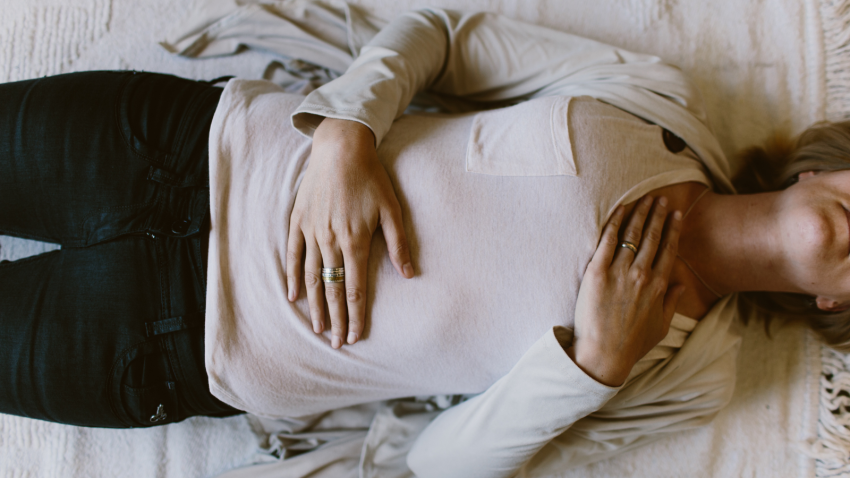
Recovering From Breast Cancer: A Gentle Sequence
One of the most common side effects of undergoing cancer treatment is fatigue. Treatments such as radiation and chemotherapy can sap your energy. Similarly, the emotional upheaval of being diagnosed with cancer and receiving treatment can be draining. Patients often struggle with feelings of anxiety, anger, fear, and depression. Tailoring your yoga practice to accommodate your energy level during breast cancer recovery is a form of self-care during this challenging time.
The following sequence is designed to support you at any stage of your breast cancer journey. This gentle four-pose sequence can easily be done lying on the floor or in bed. Feel free to do only one or two poses when feeling exhausted. And remember to listen to your body. Move slowly and mindfully, offering yourself compassion and kindness.
A Yoga Sequence for Breast Cancer Recovery
Windshield Wipers
This movement brings awareness to your spine, stretching both your lower and upper back as well as your hips, neck, and shoulders.
-
 Bring the soles of your feet flat to the bed or floor, hips-distance (or slightly wider) apart. Arms can rest at your sides.
Bring the soles of your feet flat to the bed or floor, hips-distance (or slightly wider) apart. Arms can rest at your sides. -
On an exhalation, let your knees drop to the right. They don’t have to come to rest on the floor or bed. Work within your comfortable range of motion. Inhale both knees to center and exhale them to the left.
-
Continue moving the knees from side to side, like windshield wipers, for 4 to 6 more breaths.
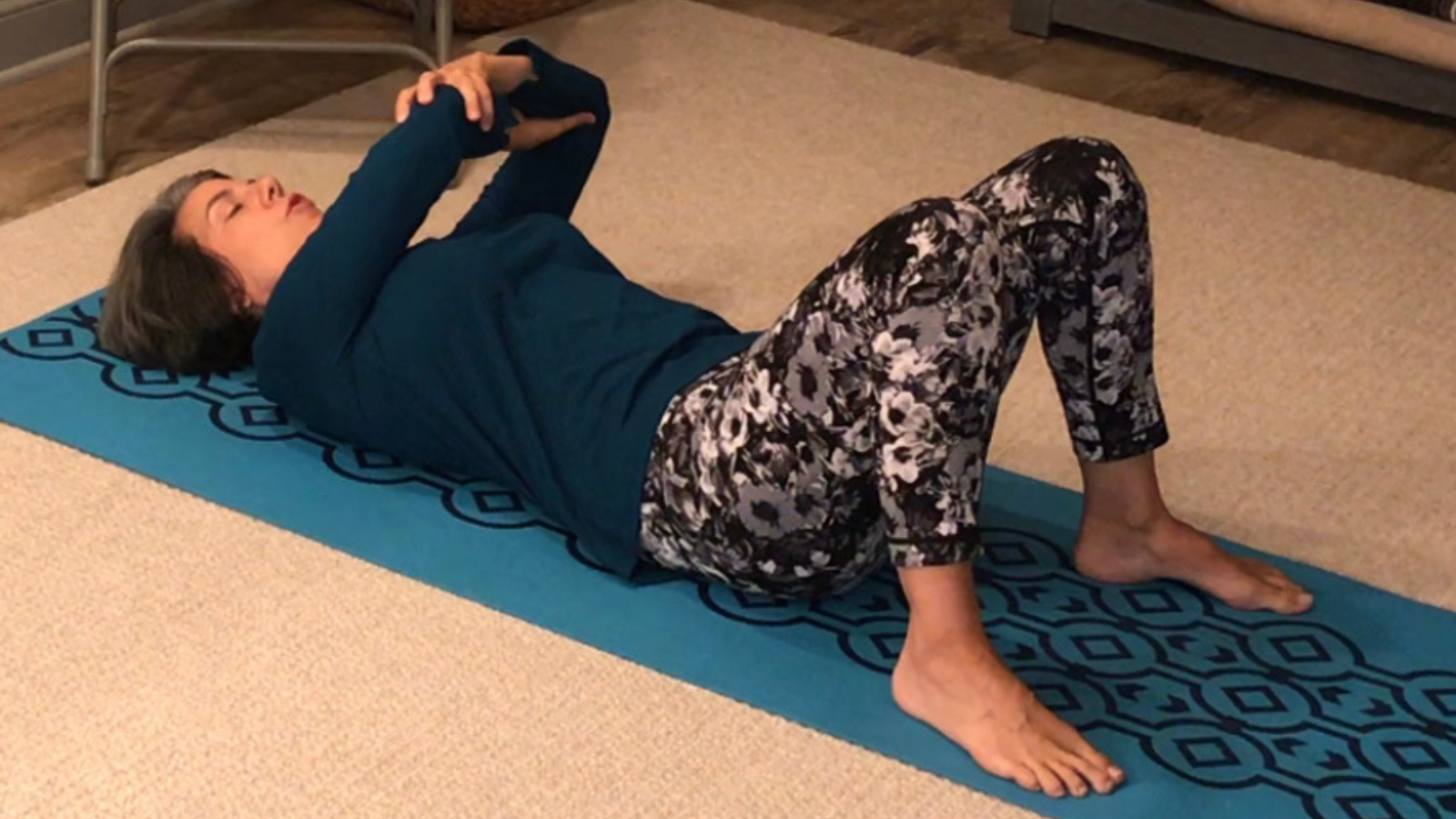
-
Next, bring your forearms over your chest, holding opposite elbows. As you did with your knees, exhale your arms to one side, allowing your head to turn toward the opposite shoulder.
-
On an inhalation, bring your head and arms to center. Then exhale to the other side. Repeat 4 to 6 repetitions, keeping the movement small if your chest muscles are tight.
-
To finish, relax your arms by your sides and take 1 to 2 breaths here.
Knee-to-Chest Pose
This pose is very calming. It helps to gently stretch and ease tension in the pelvis, hips, and lower back. The pose also helps to stimulate the digestive system, especially when you have gas or bloating.
-
 Begin by gently lifting your bent right knee toward your chest and holding it with both hands.
Begin by gently lifting your bent right knee toward your chest and holding it with both hands. -
On an exhalation, bend your elbows, drawing the knee toward your torso.
-
As you inhale, allow the knee to float away from your torso until your elbows straighten.
-
Repeat 3 to 4 times.
-
Place your foot back on the floor or bed and take 2 to 3 breaths, noticing any sensations in your hips, pelvis, and low back, before repeating on the left.
Seated Side Bend

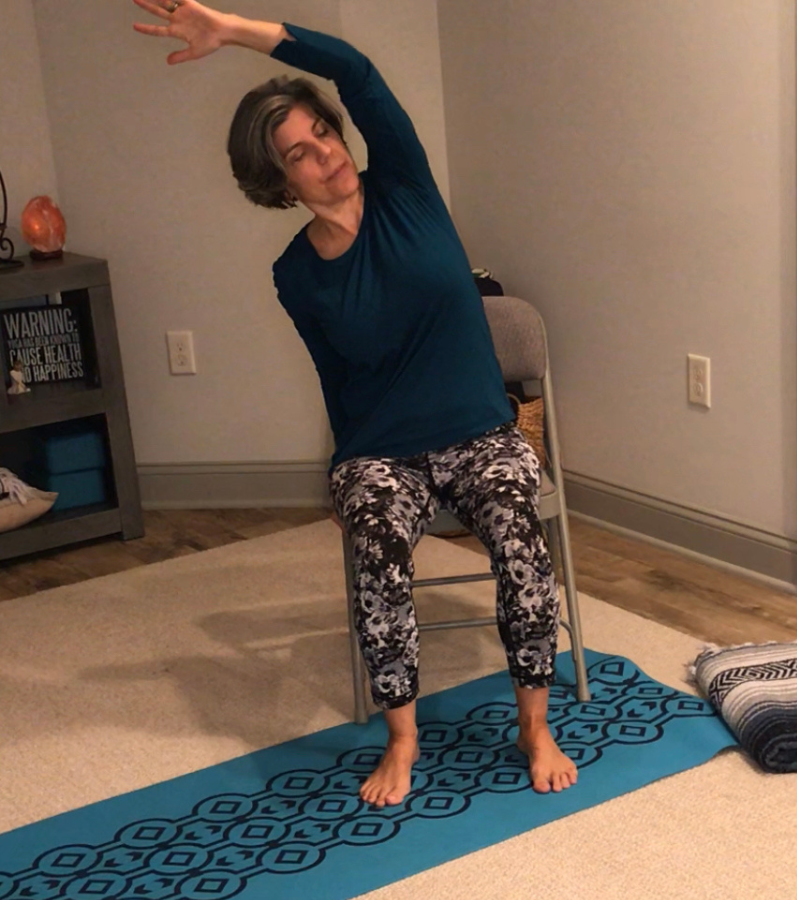 This simple seated side bend lengthens the abdominal muscles while also improving spine flexibility. It also stretches the intercostal muscles found between your ribs. Lengthening these muscles aids with posture and neck and shoulder tension and increases your ribs' full range of motion.
This simple seated side bend lengthens the abdominal muscles while also improving spine flexibility. It also stretches the intercostal muscles found between your ribs. Lengthening these muscles aids with posture and neck and shoulder tension and increases your ribs' full range of motion.
-
Come to a seated position, either on the side of the bed or in a chair, with your feet flat on the floor. Alternatively, you can sit cross-legged on the floor. If your knees are higher than your hips, sit on a folded blanket or cushion.
-
Place your left palm flat on the bed and in line with the left hip. If seated in a chair, use your left hand to hold the left side of your chair. Bend your right elbow as if you were waving hello to a friend.
-
On an inhalation, reach your right arm up, arching gently to the left. Alternatively, if you have a limited range of motion due to an incision or scar tissue, place your right fingertips either behind your head or on your right shoulder. Lift your elbow, moving only as high as you are able. As you exhale, return to center.
-
Repeat this 3 to 4 times. On your last repetition, stay in the stretch for several breaths. Try to keep the chest open, drawing your right shoulder back if it starts to round forward. Exhale to center, releasing both arms. Pause and notice any sensations in the right side of your torso and right shoulder before switching sides.
Seated Cat-Cow Pose (Marjaryasana/Bitilasana)
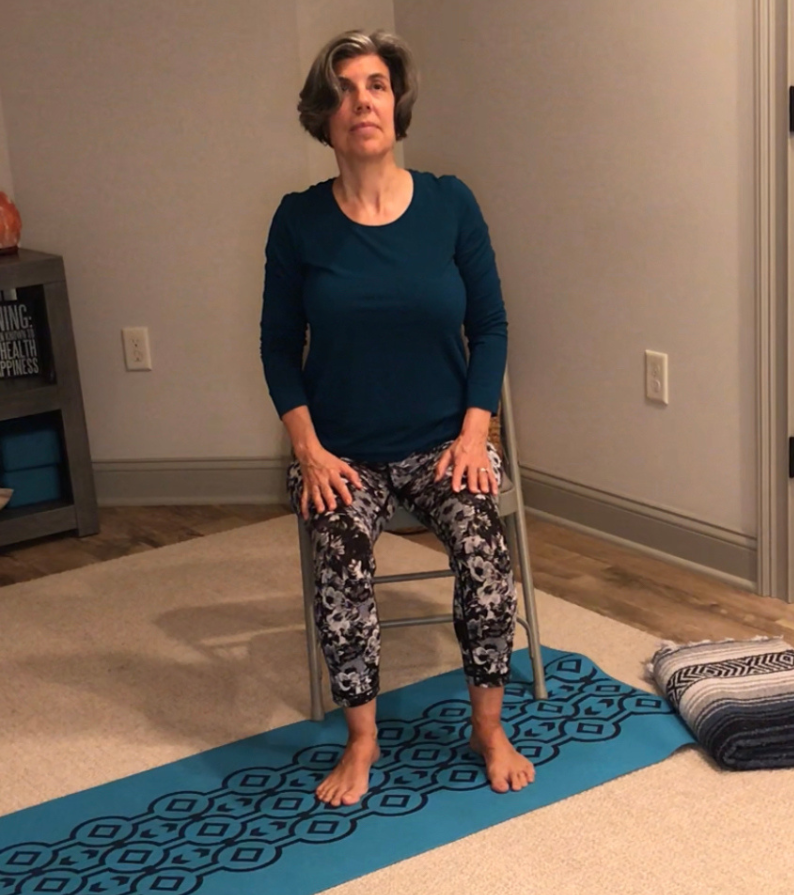 When stressed, we tend to hold tension in our spine. Cat-Cow Pose is a lovely way to bring flexibility into your spine and torso, increasing spinal mobility and cerebrospinal fluid circulation. It also strengthens your lower back and decreases hip pain.
When stressed, we tend to hold tension in our spine. Cat-Cow Pose is a lovely way to bring flexibility into your spine and torso, increasing spinal mobility and cerebrospinal fluid circulation. It also strengthens your lower back and decreases hip pain.
-
From a seated position, place your hands on your thighs.
-
On an inhalation, lift your chest, arching your back slightly. As you exhale, gently round your back, allowing your chin to move towards your chest.
-
Repeat for 3 to 4 more rounds.
To complete your practice, rest your hands lightly at your heart center. Take a moment of gratitude for those who support you and for your own courage and resilience.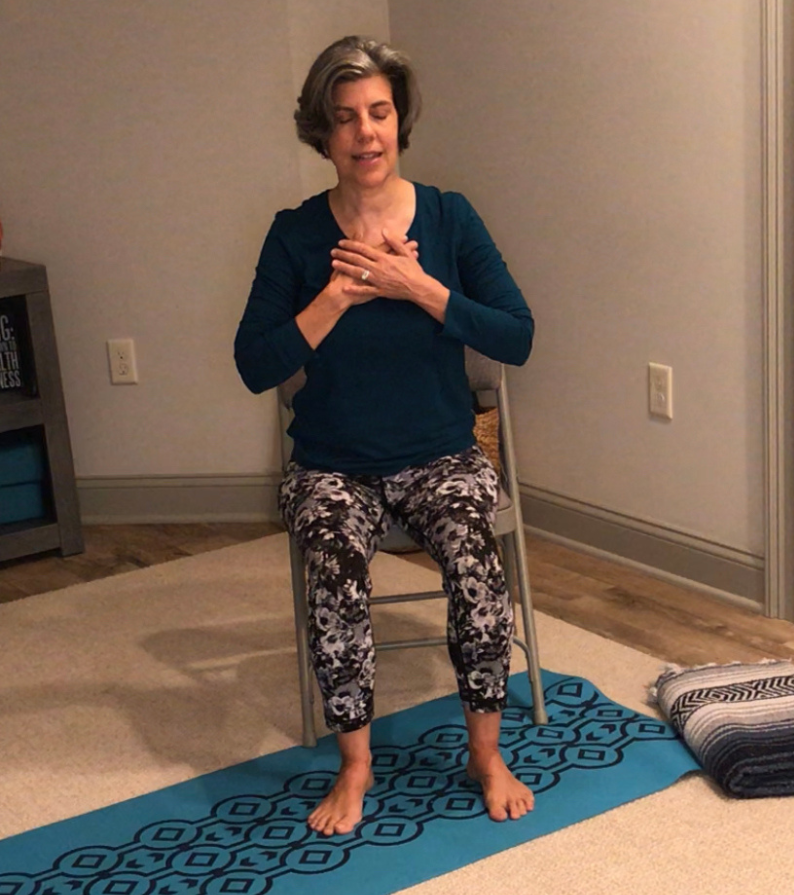
Treatments for breast cancer can sap your physical strength, so be kind to yourself. Use this short breast cancer recovery sequence as part of your self-care routine as often as possible, acknowledging that some days you won’t feel like moving at all. That’s okay. Be patient and hang in there. Better days are coming. Be well!
Reprinted with permission from WisdomTreeYoga.com

Beverly Davis-Baird, MA, C-IAYT, is a New Jersey-based yoga therapist, writer, and educator. She specializes in making yoga accessible for adults 50+, offering classes and workshops for back care, arthritis, bone health, balance, posture, and healthy aging. An educator at heart with over 20 years of experience as a public school teacher, Beverly brings her knowledge of individual learning styles to her classes, providing clear, concise, inclusive, and compassionate instruction. Bringing over 30 years of experience and training, she considers herself a lifelong learner and believes that the practice of yoga should bring spaciousness and release from tension, not create it. As such, she strives to make yoga accessible to people of differing abilities, believing the real benefits of yoga come from what is taken with you outside of class and into your life. To read her blog or learn more about her teaching schedule and latest offerings, please visit www.wisdomtreeyoga.com.
Featured Courses









